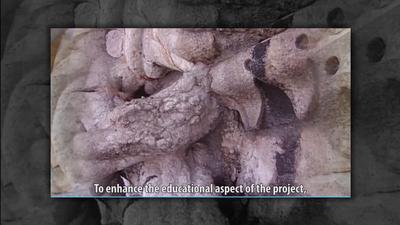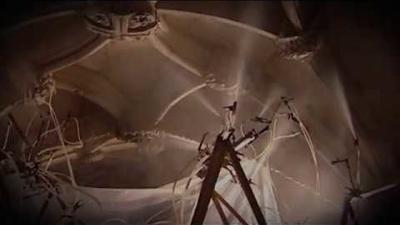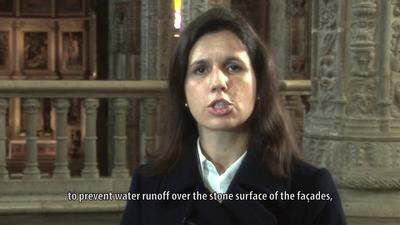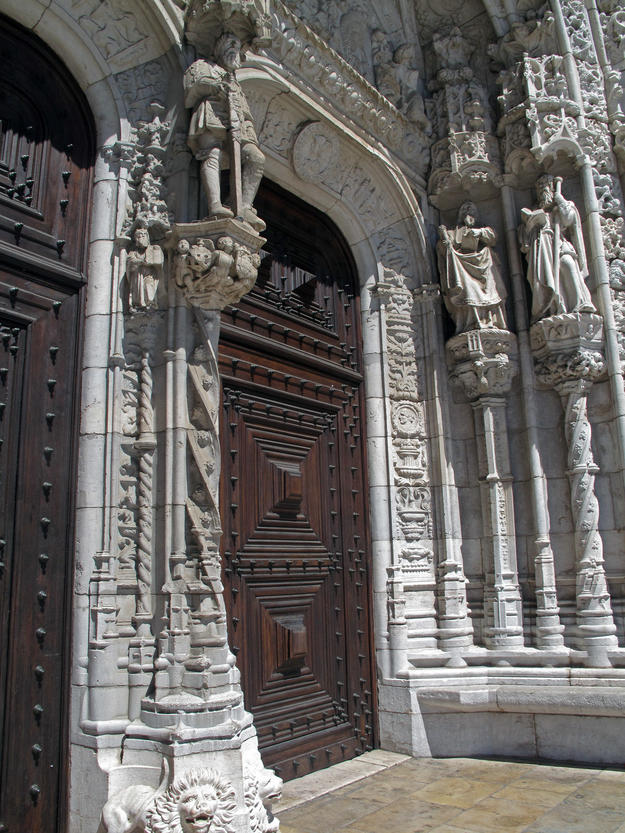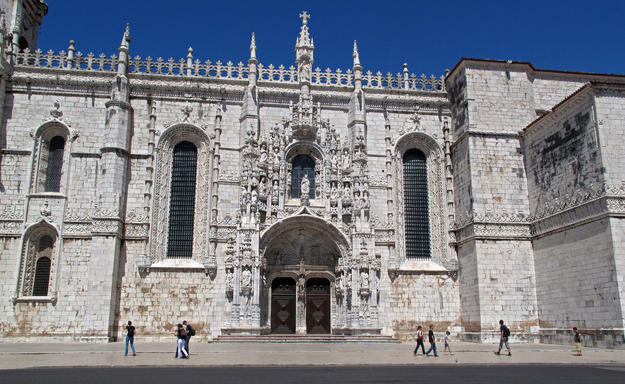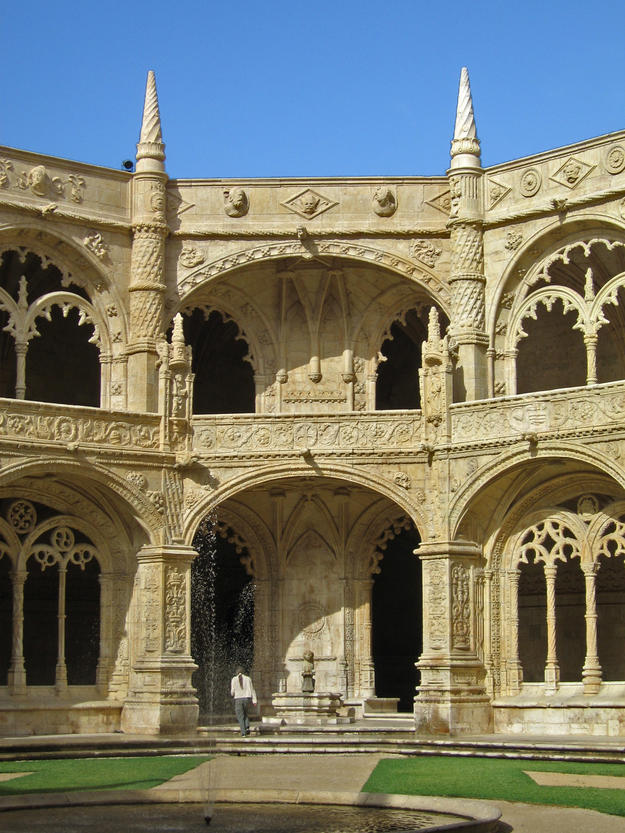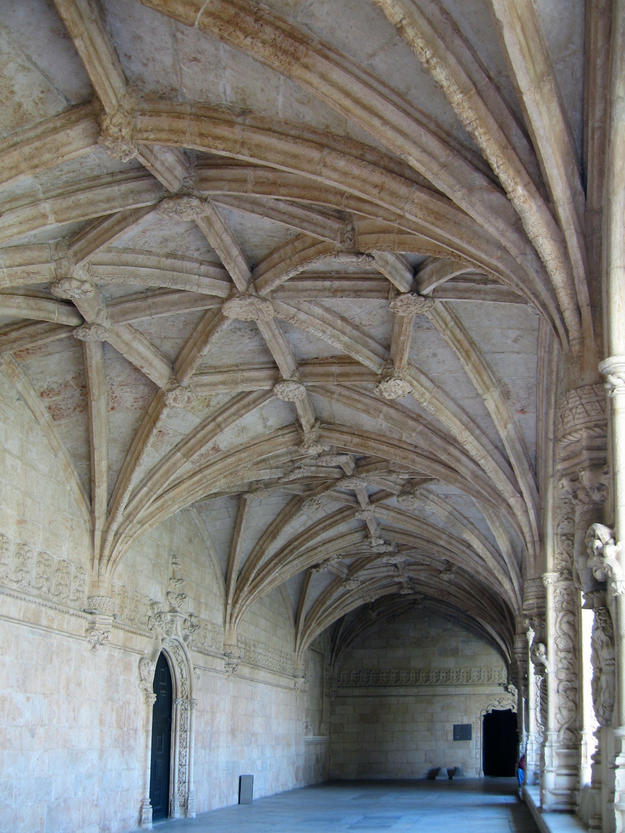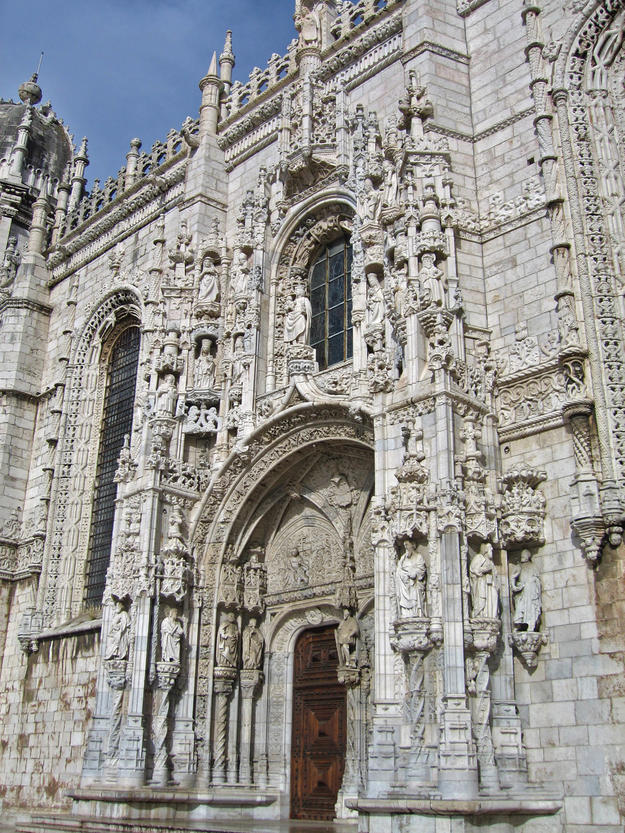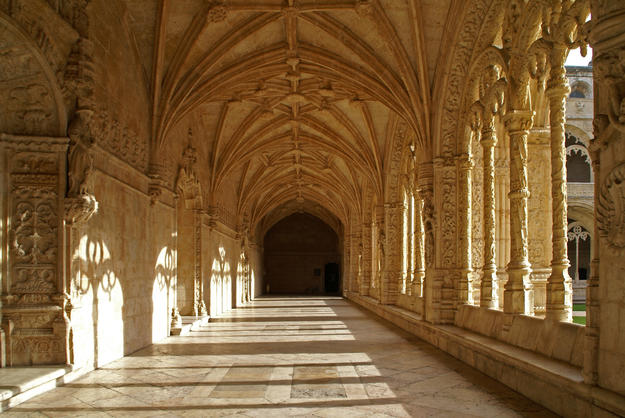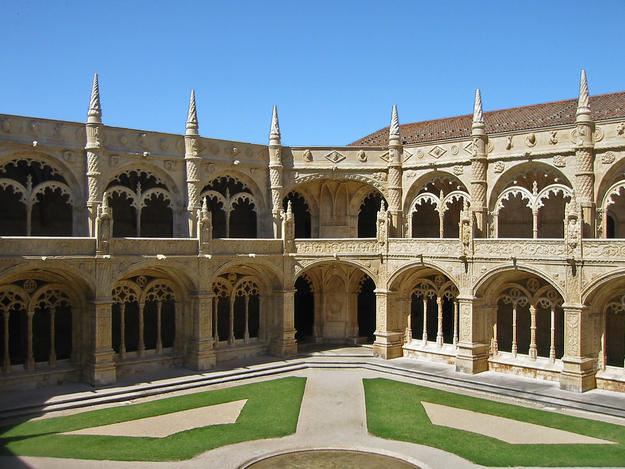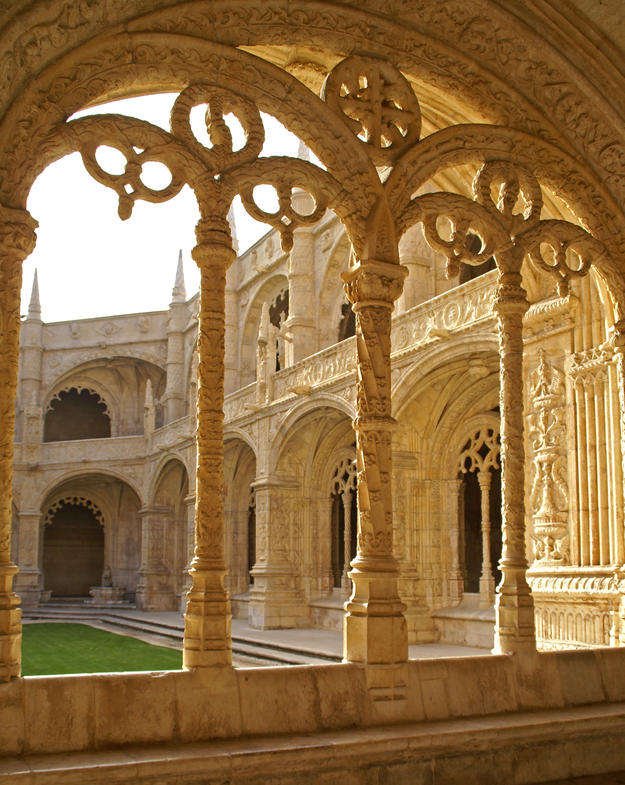Jeronimos Monastery and Church
Site History and Significance
The Historic Monastery
One of the most important monuments in Portugal, Jerónimos Monastery is the country’s most visited heritage site. The sixteenth-century monastery, which was built under the reign of King Manuel I, is an architectural masterpiece that has been admired for centuries. Dedicated to the Order of Saint Jerome, the monastery was erected close to the fifteenth-century Church of Santa Maria de Belém. Its cloister was a serene place for prayer, meditation, and leisure for the order’s monks.
Jerónimos Monastery is an important example of Manueline, or Portuguese Late Gothic architecture. With vaulted ceilings and sophisticated decorative elements, the site reflects the ecclesiastical and royal commissions that characterized the era in which it was built. Of particular note are images from the Passion, the Order of Christ Cross, the royal coat of arms, botanical motifs, and late medieval images of beasts that together chronicle the religious purpose of the monastery, its royal associations, and highlight the exceptional artists employed at the monastery. The monastery is also of particular historical significance, as it was built during Portugal’s age of exploration, when intensive national maritime campaigns spanned the globe.
Challenges to the Site
Being the most visited monument in Portugal, the site suffers from the continuous wear of tourism. Furthermore, the degradation of the church’s domes and walls, evidenced by the fall of joint mortars, raised general awareness of the overall deterioration of the site.
Our Involvement
A Long-Standing Commitment from World Monuments Fund
World Monuments Fund (WMF) Portugal has been engaged in the conservation of Jerónimos Monastery for over two decades in partnership with the Directorate-General of Cultural Heritage (DGPC). The first intervention took place between 1999 and 2001, during which time, the WMF Portugal Scientific Committee and staff conducted extensive condition surveys at the site to document significant changes to the structure over time. Based on the condition surveys, a 10-phase conservation program of the church was developed in 2012 to minimize the risk of deterioration at the monument and ensure a cohesive treatment of the entire site.
WMF's Ten-Phase Conservation Project
The ten-phase plan is made up of six interior and four exterior phases, allowing the monument to remain open for public visitation and religious and state protocol events.
Between 2012 and 2013, the Directorate General of Cultural Heritage (DGPC) performed the interior phase one case study intervention, identifying water filtration problems in the interior domes and walls of the monument, and in its exterior masonry walls and terraces. This case study intervention led to the definition of an intervention plan that is being implemented by WMF Portugal and DGPC. This intervention was followed, in 2014, by interior phase two, which conserved the interior north wall and corresponding row of vaults of the central nave.
Work began on the exterior in 2015 with significant support from GRoW @ Annenberg, a philanthropic initiative of the Annenberg Foundation, led by Gregory Annenberg Weingarten. This first exterior phase focused on the west facade and bell tower of the monastery. A generous contribution from the Robert W. Wilson Challenge to Conserve Our Heritage in 2016 allowed for the expansion of the project to the south façade and portal of the monastery and the completion of exterior phase two in 2017, involving the construction of a new drainage system to prevent water infiltration issues. Interior phase three was completed in December 2019 and focused on conservation of the southwall, row of vaults, and adjoining walls of the main nave, and of two central vaults of the upper choir. WMF Portugal is currently developing the next intervention, which will include exterior phases three and four. The 10-phase plan is scheduled to conclude between 2023 and 2024.
WMF Portugal obtained matching funds for the 5 interventions concluded from the following entities: Ministry of Culture, Millenium BCP Foundation, EDP, Richemont International, ACP, Brisa and Team 4. For the current intervention, which includes phases exteriors 3 and 4, WMF Portugal obtained matching funds from the following entities: Ministry of Culture, Millennium BCP Foundation, Brisa, CGD Bank, Prozis, REN.
Additional Work
In parallel to the 10-phase conservation program, WMF Portugal restored stained-glass windows and performed an extensive condition survey of the monument’s exterior, commissioning research documenting the building’s history. WMF Portugal and the New University of Lisbon also supported academic and scientific research exploring the impact of mass tourism on the church’s interior microclimate.
Learn More
World Monuments Fund safeguards cultural heritage around the globe, ensuring our treasured places are preserved for present and future generations.
Sign up for our newsletter to receive regular updates on our projects, stories from the field, upcoming events, and more!
![]()
World Monuments Fund’s work at Jerónimos Cloister, led by our Portugal office in partnership with the Public Institute of Cultural Heritage, has been made possible, in part, by support from Cimpor; EDP; Fundação Millennium bcp; Fundação Luso-Americana para o Desenvolvimento; Galp Energia; SGC SGPS; The Navigator Company; The Robert W. Wilson Charitable Trust; and the Samuel H. Kress Foundation.
World Monuments Fund’s work at Jerónimos Church, led by our Portugal office in partnership with the Public Institute of Cultural Heritage, has been made possible, in part, by support from The Robert W. Wilson Charitable Trust; Gregory Annenberg Weingarten, GRoW @ Annenberg; Richemont International S.A.; EDP; Fundação Millennium bcp; ACP - Automóvel Clube de Portugal; Team Quatro Lda.; and Grupo Brisa.
Videos
